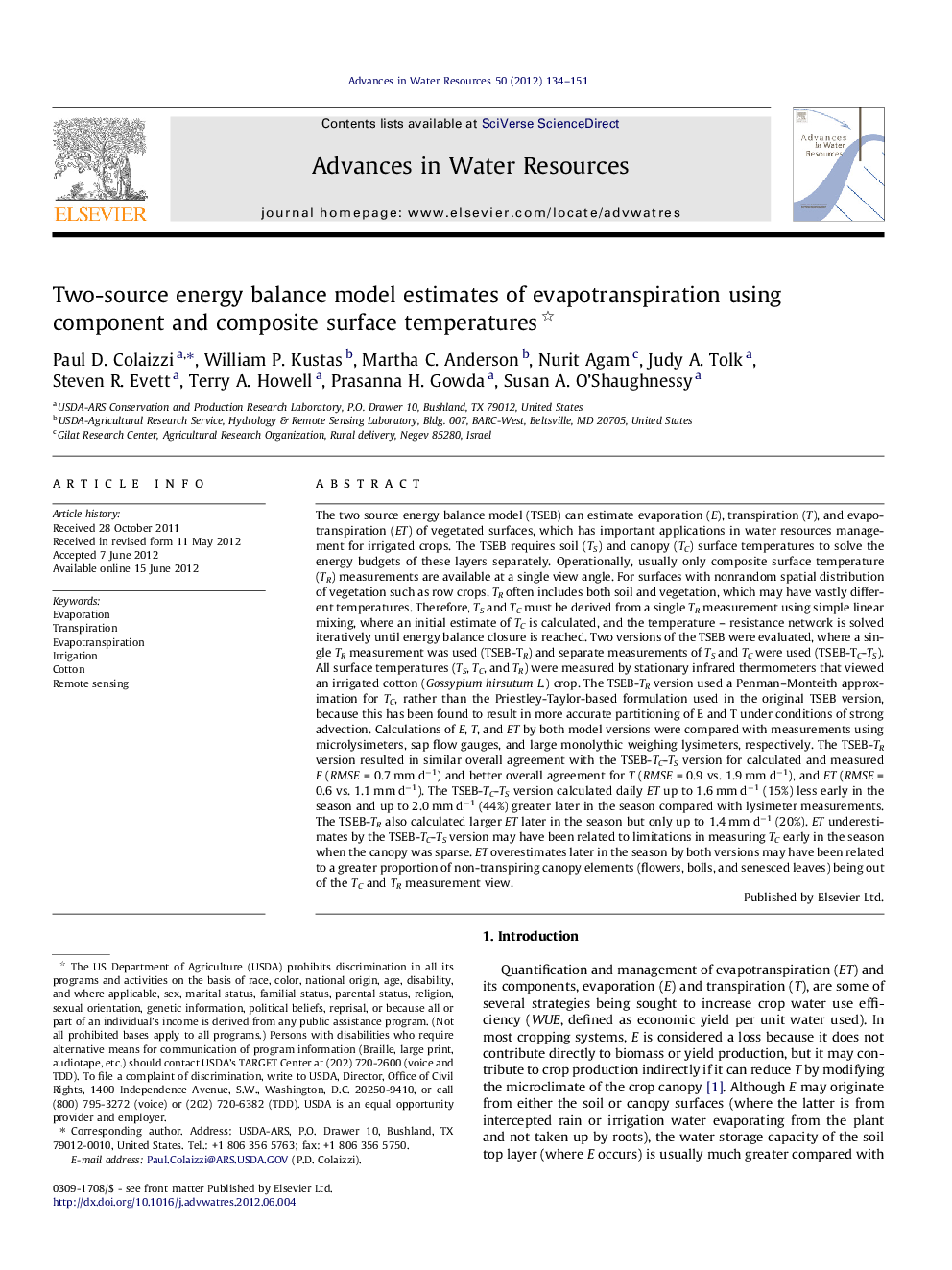| کد مقاله | کد نشریه | سال انتشار | مقاله انگلیسی | نسخه تمام متن |
|---|---|---|---|---|
| 4525718 | 1625658 | 2012 | 18 صفحه PDF | دانلود رایگان |

The two source energy balance model (TSEB) can estimate evaporation (E), transpiration (T), and evapotranspiration (ET) of vegetated surfaces, which has important applications in water resources management for irrigated crops. The TSEB requires soil (TS) and canopy (TC) surface temperatures to solve the energy budgets of these layers separately. Operationally, usually only composite surface temperature (TR) measurements are available at a single view angle. For surfaces with nonrandom spatial distribution of vegetation such as row crops, TR often includes both soil and vegetation, which may have vastly different temperatures. Therefore, TS and TC must be derived from a single TR measurement using simple linear mixing, where an initial estimate of TC is calculated, and the temperature – resistance network is solved iteratively until energy balance closure is reached. Two versions of the TSEB were evaluated, where a single TR measurement was used (TSEB-TR) and separate measurements of TS and TC were used (TSEB-TC-TS). All surface temperatures (TS, TC, and TR) were measured by stationary infrared thermometers that viewed an irrigated cotton (Gossypium hirsutum L.) crop. The TSEB-TR version used a Penman–Monteith approximation for TC, rather than the Priestley-Taylor-based formulation used in the original TSEB version, because this has been found to result in more accurate partitioning of E and T under conditions of strong advection. Calculations of E, T, and ET by both model versions were compared with measurements using microlysimeters, sap flow gauges, and large monolythic weighing lysimeters, respectively. The TSEB-TR version resulted in similar overall agreement with the TSEB-TC-TS version for calculated and measured E (RMSE = 0.7 mm d−1) and better overall agreement for T (RMSE = 0.9 vs. 1.9 mm d−1), and ET (RMSE = 0.6 vs. 1.1 mm d−1). The TSEB-TC-TS version calculated daily ET up to 1.6 mm d−1 (15%) less early in the season and up to 2.0 mm d−1 (44%) greater later in the season compared with lysimeter measurements. The TSEB-TR also calculated larger ET later in the season but only up to 1.4 mm d−1 (20%). ET underestimates by the TSEB-TC-TS version may have been related to limitations in measuring TC early in the season when the canopy was sparse. ET overestimates later in the season by both versions may have been related to a greater proportion of non-transpiring canopy elements (flowers, bolls, and senesced leaves) being out of the TC and TR measurement view.
► Two source energy balance model calculates evaporation and transpiration.
► Soil and canopy component temperatures are required but seldom measured.
► Component temperatures can be measured or calculated from composite surface temperature.
► Measured composite temperature gave better results than measured component temperatures.
Journal: Advances in Water Resources - Volume 50, December 2012, Pages 134–151